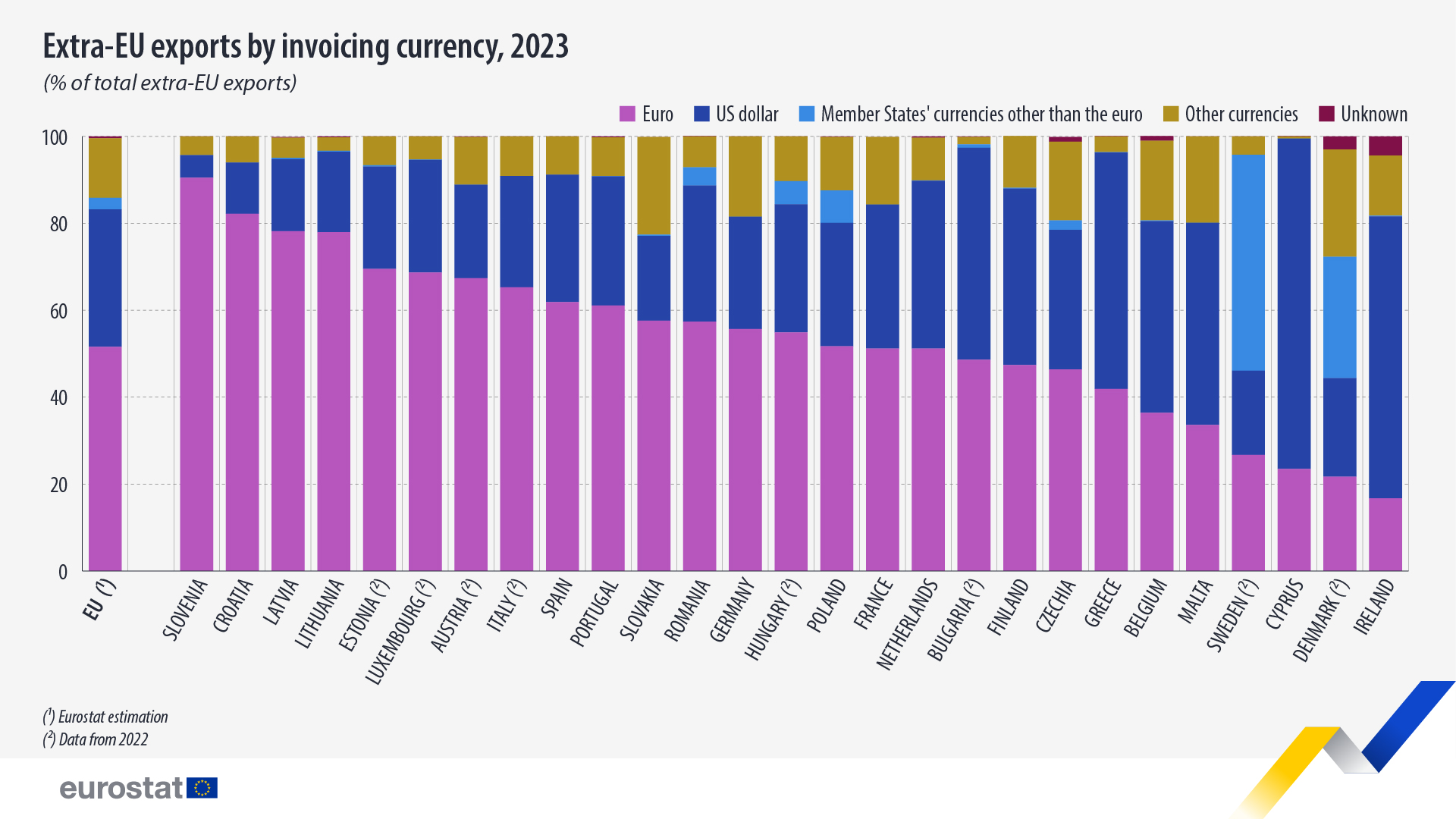Euro and US dollar dominate extra-EU trade in 2023

In 2023, 46% of overall extra-EU trade in goods was conducted in euro, while 42% was in US dollars. Currencies of the EU countries other than euro were used for 2% of the trade, and other currencies amounted to 10%.
The euro was the most used currency for exports, with a 52% share, ahead of the US dollar at 32%, currencies of EU countries other than the euro at 3%, and other currencies at 14%.
In 19 of the 27 EU countries, the euro was the most used currency for extra-EU exports of goods in 2023. The highest shares were recorded in Slovenia (90%), Croatia (82%), and Latvia (78%).
In 6 EU countries, the US dollar was the most used currency for exports. Among these, shares above 50% were recorded in Cyprus (76%), Ireland (65%), and Greece (54%).
The share of EU currencies other than the euro was particularly high in Sweden and Denmark, with shares of 50% and 28% respectively, primarily due to the use of their own national currency.
Source dataset: ext_lt_invcur
US dollar was the most used currency for imports in 2023, with a share of 50%, followed by the euro at 41%. Currencies of EU countries other than the euro accounted for 1%, and other currencies for 7%.
In 2023, the US dollar was the most used currency for extra-EU imports of goods in 16 of the 27 EU countries. The share of US dollars in extra-EU imports was the highest in Finland (67%), Greece, Poland and Lithuania (all with a share of 64%).
In the remaining 11 EU countries, the euro was the most used currency for imports, with the highest shares in Slovenia (77%), Croatia (70%), and Slovakia (60%).
Currencies of EU countries other than the euro reached double digits in Czechia (24%) and Denmark (13%).
Source dataset: ext_lt_invcur
For more information
- Statistics Explained article on extra-EU trade by invoicing currency
- Thematic section on international trade of goods
- Database on international trade of goods
Methodological notes
- Data on trade by invoicing currency is collected by using the customs declarations.
- Due to rounding, the total currency shares in the article may not add up to 100%.
- 20 EU countries have replaced their national currencies with the euro: Austria, Belgium, Croatia, Cyprus, Estonia, Finland, France, Germany, Greece, Ireland, Italy, Latvia, Lithuania, Luxembourg, Malta, the Netherlands, Portugal, Slovakia, Slovenia and Spain. National currencies are used in Bulgaria, Czechia, Denmark, Hungary, Poland, Romania and Sweden.
If you have any queries, please visit our contact us page.


